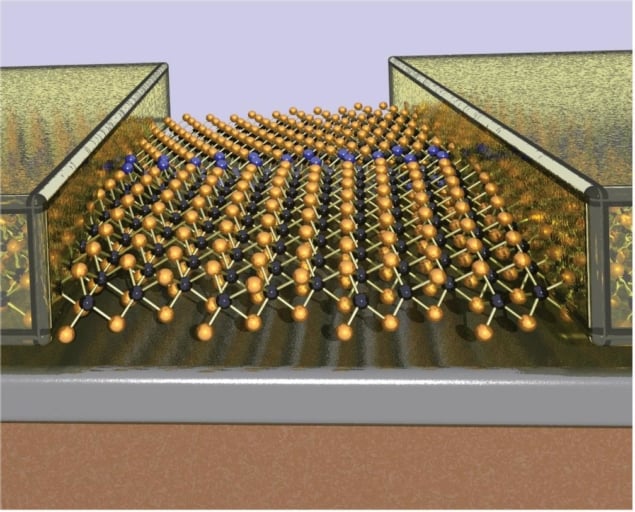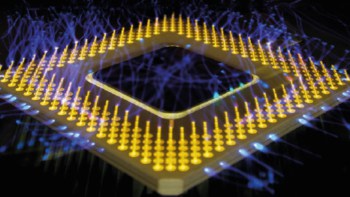
Memristors bring the learning functionality of connections in biological neural systems to the connections in electronic circuits. As such they have attracted a lot of interest for their potential use in neuromorphic electronics. However, even state-of-the-art memristor devices have been limited to two or three terminals, whereas in the brain, synapses outnumber the neurons they connect by a factor of a thousand. Now, researchers at Northwestern University in the US led by Mark Hersam have demonstrated the first ever multiterminal memristor based on polycrystalline 2D MoS2.
In conventional electronics the resistance in the connections is set, but in biological neural systems the connectivity changes depending on what signals have previously travelled along that synaptic pathway. These synaptic connections between neurons allow a level of learning and functionality that scientists would like to emulate in neuromorphic electronics.
Memristors are circuit elements, where the resistance changes from high to low depending on what voltage inputs have passed through previously. Leon Chua predicted the existence of these “missing circuit elements” in the 1970s and they have attracted a lot of interest since R Stanley Williams and colleagues at HP Labs “found” them because among other things they show great promise for emulating synaptic connections.
Attempts to produce a memristor with more than two terminals date back as far as the 1960s, with Bernard Widrow and Ted Hoff’s adaptive linear (Adaline) chemical memristor. However, neither the three-terminal Widrow–Hoff memristor nor subsequent set ups of field-effect transistors with nanoionic or floating gates have demonstrated memristive switching. Hersam and his team have now demonstrated the viability of multiterminal memtransistors thanks to the memristive switching mechanism that operates in their MoS2 device.
Moving to multiterminals
Hersam and his colleagues modelled the behaviour of the MoS2 memtransistor based on Schottky barriers – potential energy barriers that charge carriers must overcome or tunnel through to flow. These Schottky barriers change in response to the lowering and tunnelling of image charges under a high voltage bias, and it is this gate voltage dependence that the researchers describe as the “most important feature of the MoS2 memtransistor, distinguishing it from a two-terminal memristor”.
The gate-dependent Schottky barrier switching allows control of conductance in circuits that emulate pre- and post-synaptic modulation by means of additional terminals. While other setups such as AgS2 memristors allow terminal-controlled conductance modulation, switching in these devices is based on filament formation limiting the device to three terminals.
The researchers fabricated a six-terminal synaptic memtransistor from polycrystalline MoS2 and showed they could modulate the switching ratio between any pair of side electrodes by a factor of between 2 and 10 using the gate voltage. They also demonstrated long-term potentiation and depression – learning functions of biological synapses. Since they used polycrystalline materials they suggest that scaling the technology to large areas should be straight forward.
Full details are reported in Nature doi:10.1038/nature25747.


